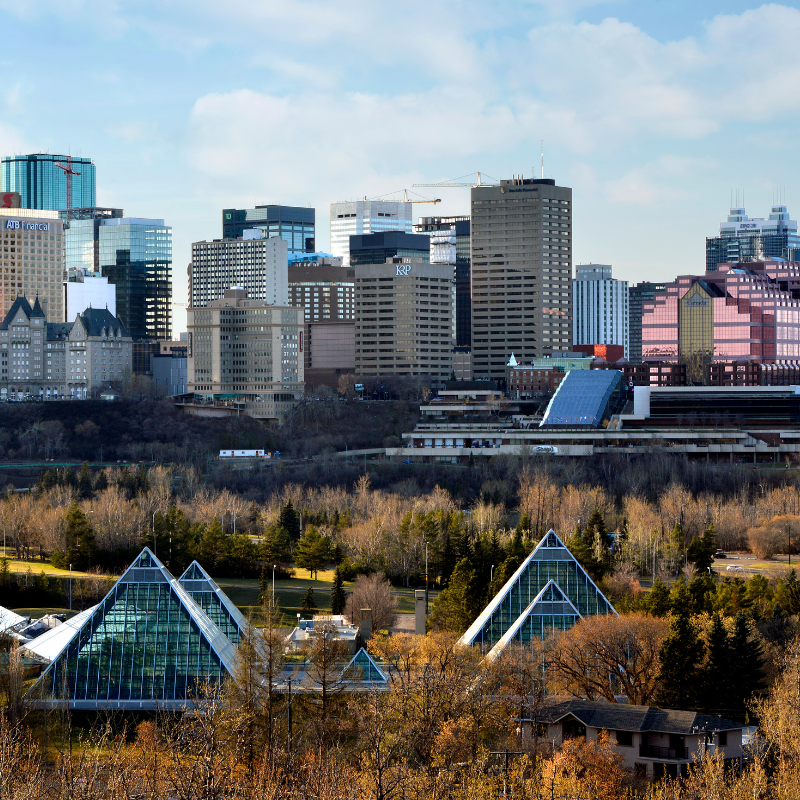Since 2009, Edmonton has reduced its overall homeless numbers by 43% and since January 2018 has cut its chronic homeless numbers by an additional 15%. How did they get there? Through committing to quality data, community engagement and continuous improvement. This blog is a part of our Bright Spot series highlighting outstanding work in ending homelessness happening across Canada.
 One of Canada’s largest cities is reducing chronic homelessness, proving that solving homelessness is possible in big cities. Since 2009, Edmonton has reduced overall homelessness 43% and is driving for an end to chronic homelessness by 2020. The Alberta city of a million people is making important progress on their chronic homelessness goal achieving a 15% reduction since January 2018.
One of Canada’s largest cities is reducing chronic homelessness, proving that solving homelessness is possible in big cities. Since 2009, Edmonton has reduced overall homelessness 43% and is driving for an end to chronic homelessness by 2020. The Alberta city of a million people is making important progress on their chronic homelessness goal achieving a 15% reduction since January 2018.
According to Susan McGee, Homeward Trust CEO, it’s due to a clear focus on ending homelessness, strong community engagement, data-driven decision making and continuous improvement.
“As a community, we’re relentless in our efforts to reduce chronic homelessness,” Susan says about getting people into housing. “It comes down to having good data, trying different things to get better results and working very closely with participants and partners to address needs and fill gaps as they arise.”
Real-time data is at the heart of Edmonton’s approach. They have had a quality By-Name List (BNL), since September 2017. “A key to success is the rigour of working the list, making sure the data is accurate and the numbers are telling the whole story,” Susan says.
Over much of the last year, Edmonton has focused on making sure they have an accurate BNL. Most of Edmonton’s reductions in chronic homelessness have come since January 2019 when they committed resources to reaching out to every one of the over 1,500 people on their actively chronically homeless list to update their information and housing status.
Since January, Edmonton’s numbers have consistently gone down, and they’ve maintained a minimum 10% reduction for three months straight (Built for Zero Canada’s criteria for a chronic homelessness reduction). By focusing on getting the data right they were able to accelerate their reduction efforts.
A key lesson in Edmonton is to not let increases in the numbers—as can happen as data improves—throw you off your focus. It’s important to commit to the BNL because it “allows us to ascertain what’s happening and why, and connect with community partners to find solutions,” Susan says.
Edmonton is the site of this year’s National Conference on Ending Homelessness. We’re excited to spend #CAEH19 in a community that is accelerating an end to homelessness. Register today for our biggest conference yet with a record 84 sessions across 10 streams. Visit conference.caeh.ca for more.
“It’s been an area of maturing and building trust with community,” she notes. “It’s had its ups and downs, but the nature of the list is to balance the housing and prioritization focus of the BNL while also maximizing capacity in the community.”
Edmonton also has a Coordinated Access (CA) system, which has led to a transparent and dynamic process of moving people into housing with other community agencies. “The CA program is centralized,” Susan says. “However, we’ve been maturing the decision-making process to ensure community agencies who have that capacity are fully engaged in prioritization off the list.”
Homeward Trust’s data team has been presenting data to community members and agency partners in a way that they can see the whole picture of how and when people are moving in and out of homelessness. By sharing the data, they’re creating a space to visualize it, question it and understand it in a real time and ongoing way. “As we work with the list, the list evolves. We’re making sure if somebody is encountered, they can be housed without Homeward Trust having to say, ‘Yes, go house them.’ The community is developing that capacity and I think it’s the only way to do it.”
And being a part of BFZ-C has provided more opportunity and support for Edmonton to innovate and try new things. The Learning Sessions provide time for different team members to sit down and work things out. For example, at one session they decided to focus on how to approach outreach differently and now they have a prototype team, staffed from two agencies, that they’re testing. They’ve also spent time focusing on the “rough living population,” Susan adds.
The focus of the prototype team is on improving outcomes. “What we were not doing well enough was connecting the outreach relationship work with actual housing activity,” she says. They’ve also shifted focus on inflow, diversion and diversion training—building on their current capacity to map out how it all relates to their BNL. “That way we’re not surprised by big bumps when we see increases in inflow,” Susan notes.
“If in September the number is back up by 300, I’m not rattled by that because it’s about the ability to investigate what is happening and committing to work through it,” she adds. A growing list isn’t just a result of more inflow, it’s a reflection of a maturing BNL that informs decisions and drives the work.
What inspires Susan the most is watching her community’s persistent dedication to ending homelessness, despite the challenges and hardships that arise. It’s about keeping eyes on the “long game.”
“I enjoy the complexity of it,” Susan admits. “I really do believe this system will work.”
This blog is a part of our Bright Spot series highlighting outstanding work in ending homelessness happening across Canada.
Election 2019: Coalition calls for federal parties to address housing and homelessness
 With the next federal election only months away, a coalition of leading community housing and homelessness organizations recently released a letter sent to all the major federal political parties urging them to include measures designed to address affordable housing in their election platforms.
With the next federal election only months away, a coalition of leading community housing and homelessness organizations recently released a letter sent to all the major federal political parties urging them to include measures designed to address affordable housing in their election platforms.
These organizations include the Canadian Housing and Renewal Association, the Canadian Alliance to End Homelessness, the CHRA Indigenous Housing Caucus, the Cooperative Housing Federation of Canada, and the Réseau québécois des OSBL d’habitation.
Check out this recent blog post about it or the A Home for Everyone website to learn more.
